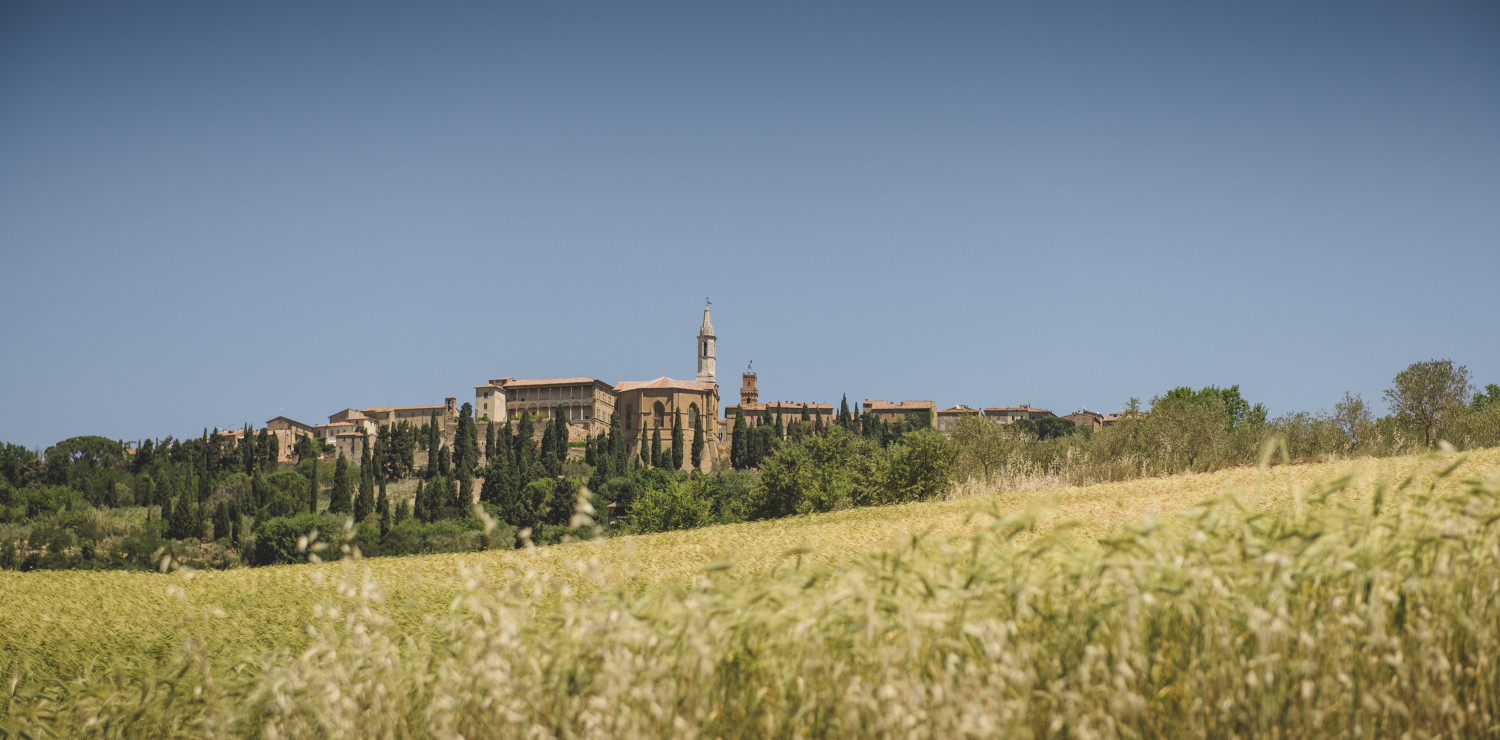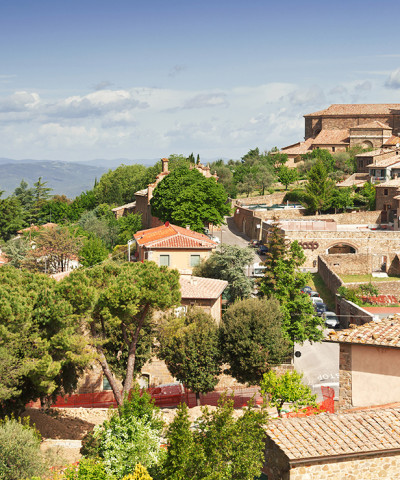What to see and where to eat in Pienza
All the most beautiful monuments and restaurants not to be missed in the beautiful Val d'Orcia village
Pienza is a rare example of Renaissance town planning, the 'ideal city', the utopia of the civitas vainly pursued by the men of antiquity. Until the 15th century it was called Corsignano, it was a fortified village a few kilometres from Montepulciano and overlooked the Val d'Orcia, a beautiful and still intact landscape. Situated on the ridge of a hill, it was surrounded by walls and had an elongated shape, traversed by a main road axis. From afar, it dominates the Via Francigena that runs on the other side of the valley.
And perhaps Corsignano would have remained a silent agricultural village if Enea Silvio Piccolomini, the only son of the nobleman Silvio, had not been born there in 1405. Exiled from Siena following a popular uprising that overthrew the aristocrats, the Piccolomini were forced to take refuge in a small estate of their own in the Val d'Orcia. Aeneas, after an eventful youth between Roman palaces and ambassadorships to Europe for the papacy, embraced the cassock at 40 and became Pope at 53: and he was Pius II. He commissioned his idea of a city from the architect Bernardo Gambarelli, known as Rossellino, a pupil of Leon Battista Alberti.
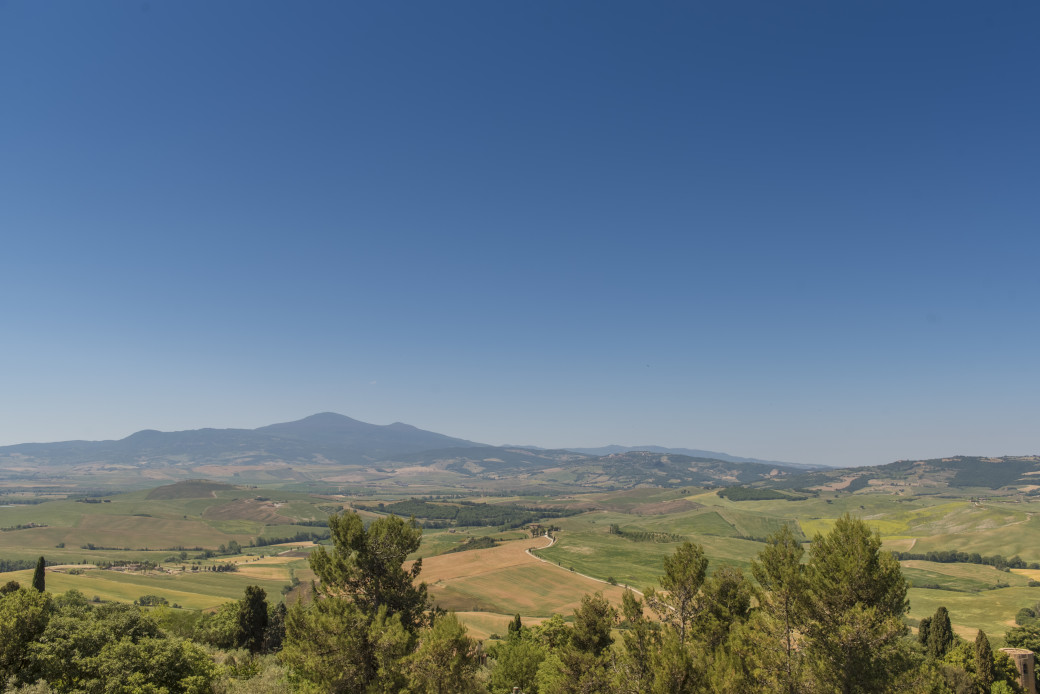 Pienza ph. Pasquale Paradiso
Pienza ph. Pasquale ParadisoWHAT TO SEE IN PIENZA:
Cathedral of Pienza (Cathedral of the Assumption)
Designed by Bernardo Rossellino and consecrated in 1462, the Cathedral of the Assumption (also known as Duomo di Pienza) was built on the ruins of the Romanesque parish church of Santa Maria at the behest of Pope Pius II and is based on the Renaissance architectural canons of Leon Battista Alberti. There is no lack of French Gothic elements, such as the pitched roof, the windows and the central rose window. The interior of the cathedral is based on the northern churches that the Pope had seen during his travels: three naves of the same height according to the Hallenkirche model.
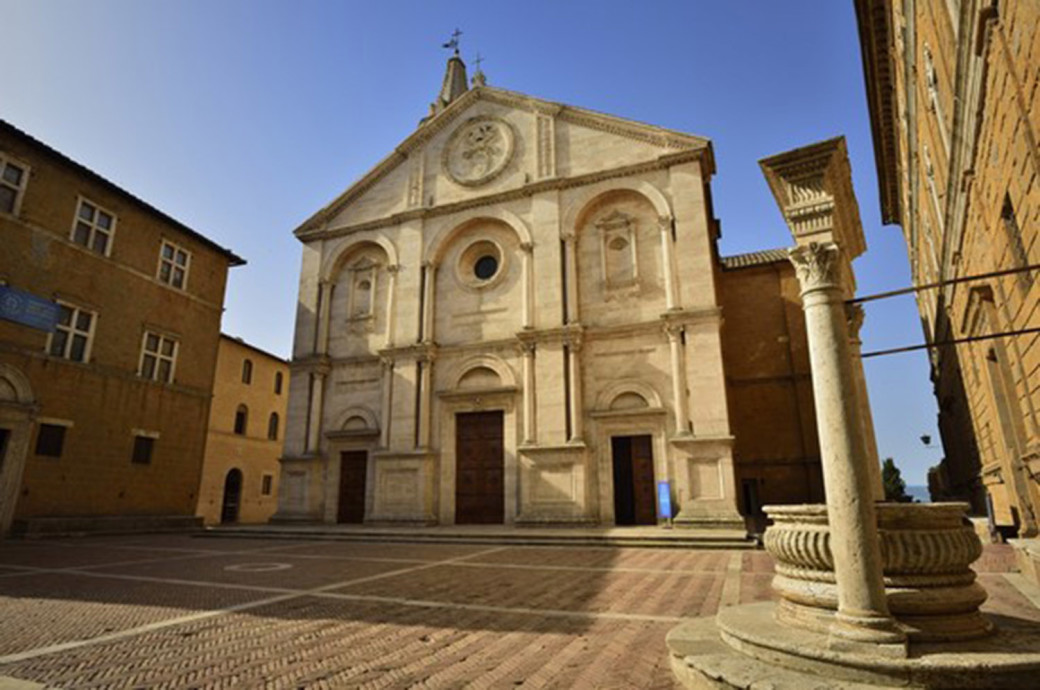 Duomo di Pienza
Duomo di PienzaPiazza Pio II
The town's main square is dedicated to Pope Pius II Piccolomini, the creator of Renaissance Pienza. It has a trapezoidal shape with herringbone brick paving and is considered one of the clearest realisations of Renaissance urban planning ideals. On one side of the square you can admire the fascinating Pozzo dei cani (Well of Dogs).
Municipal Palace of Pienza
It dates back to the mid-15th century and its main feature is the large loggia on the façade. Three arches, decorated with Ionic capitals, embellish the entrance. Inside the Council Chamber one can admire the depiction of a Madonna and Child with the patron saints of Pienza, a fresco of the Sienese school of 1400. Today, the building is the seat of the municipal administration.
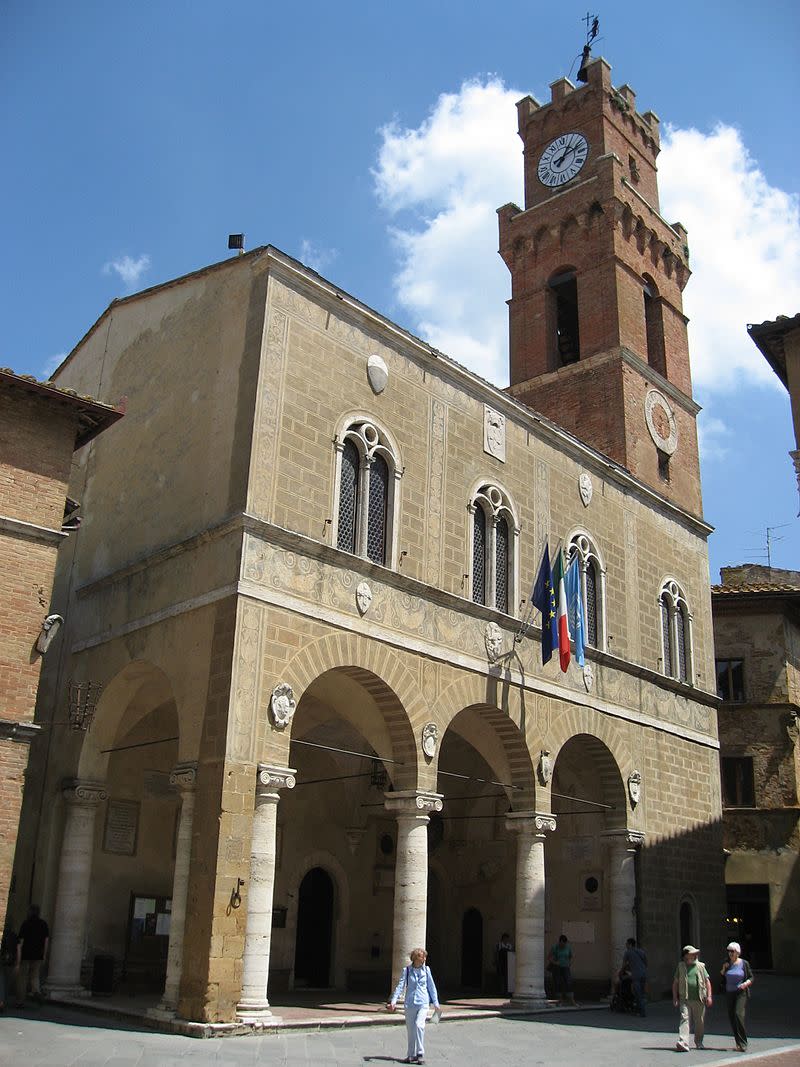 Palazzo Comunale Pienza
Palazzo Comunale PienzaPalazzo Piccolomini
To the right of the cathedral is Palazzo Piccolomini, one of the most beautiful historical palaces in Pienza. Inside you can see the loggia and the rooms on the ground floor, which house a permanent exhibition on the history of the palace. Also not to be missed is the Renaissance hanging garden.
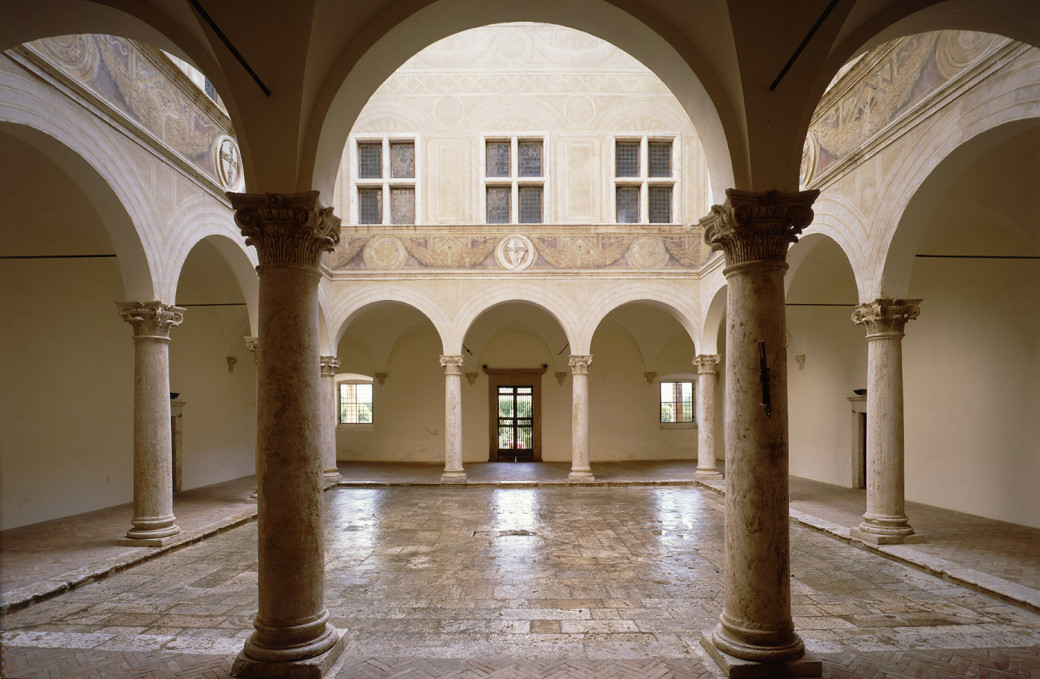 Cortile Palazzo Piccolomini
Cortile Palazzo PiccolominiPalazzo Borgia
Ancient Gothic palace donated by Pope Pius II to Cardinal Rodrigo Borgia (future Pope Alexander VI), who was his closest collaborator at the time. He renovated it during the 15th century to make it his residence. The façade is characterised by its slender portal and two orders of windows in the shape of a 'Guelph cross'.
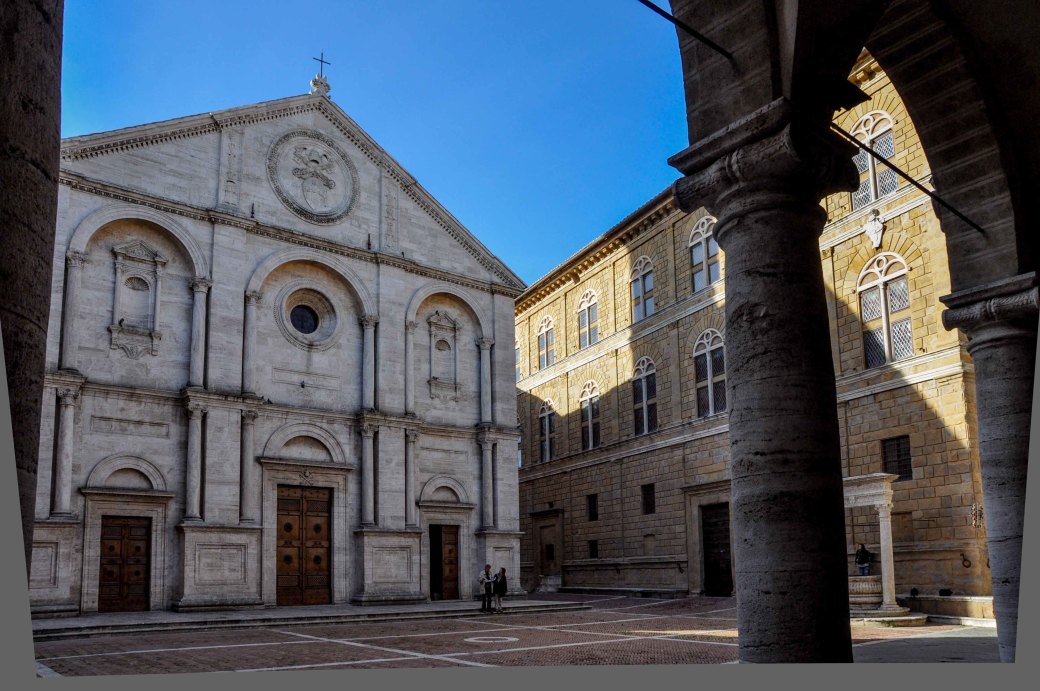 Palazzo Borgia - Pienza
Palazzo Borgia - PienzaWHAT TO SEE AROUND PIENZA:
Pieve dei Santi Vito e Modesto a Corsignano
A few hundred metres from the small town of Pienza is this three-nave Romanesque-style parish church founded in the 7th century. Older is the cylindrical bell tower, of Ravenna influence, dating back to the 11th century. Just past the entrance you can admire the baptismal font where Pope Pius II and Pius III were baptised. If you take the little white road down to the fields from here, you will also reach the Elysian fields, the fields featured in the finale of The Gladiator.
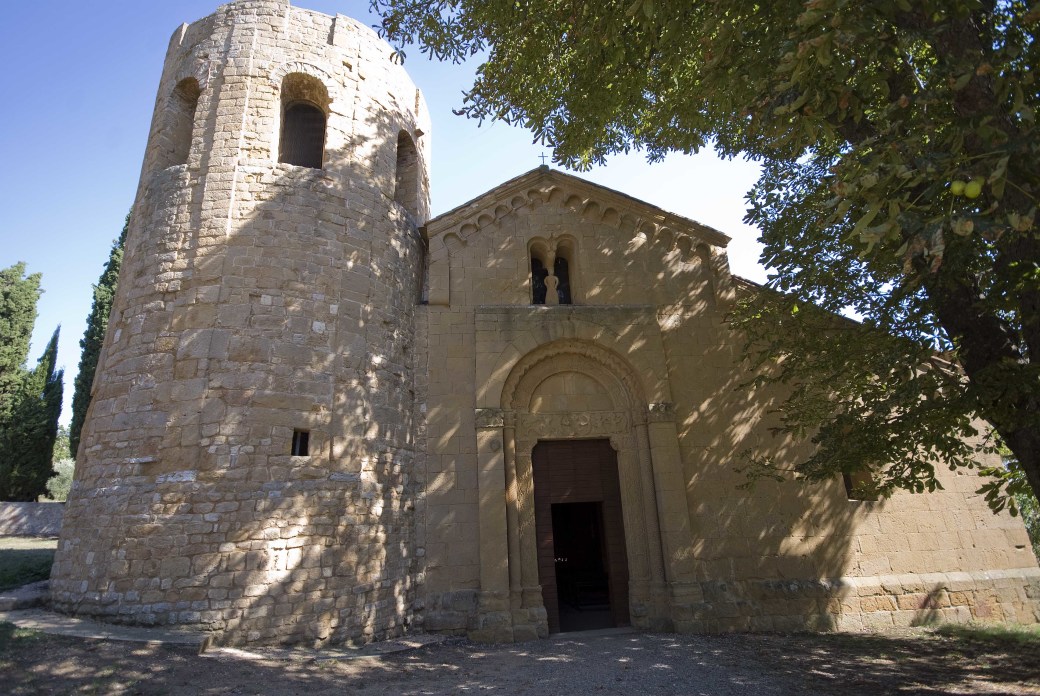 Pieve dei Santi Vito e Modesto a Corsignano
Pieve dei Santi Vito e Modesto a CorsignanoAt Vitaleta, near San Quirico d'Orcia, we find a small jewel set among the cypress trees. A church steeped in history, which the 2021 restoration gave back to the community of San Quirico and beyond, and which now rediscovers its sacredness, intimate and timeless.
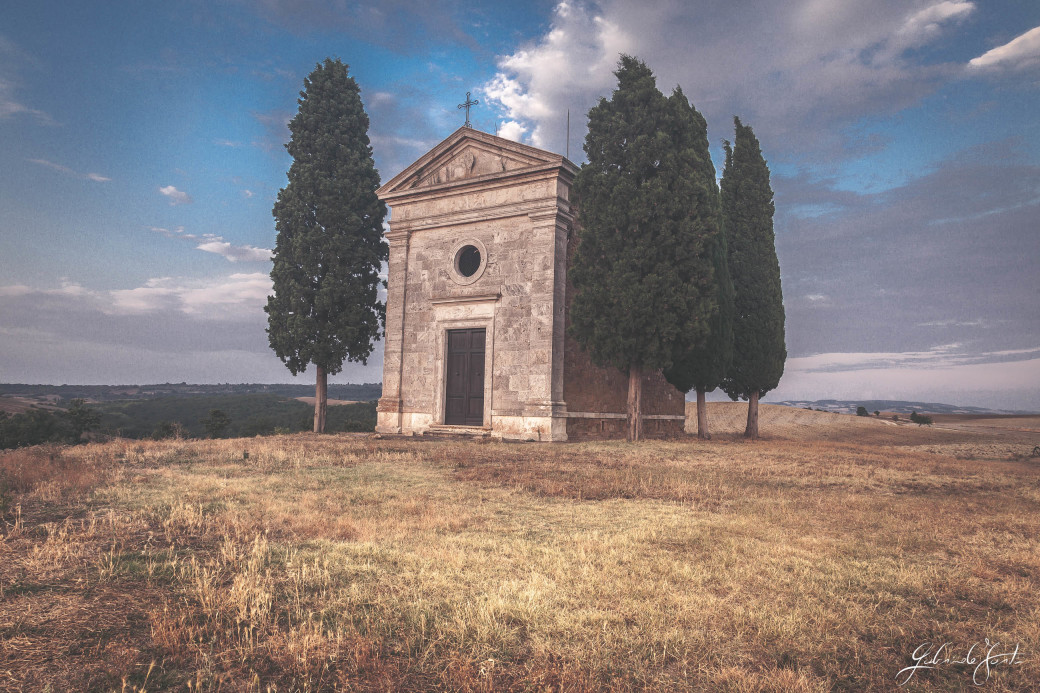 La Cappella della Madonna di Vitaleta
La Cappella della Madonna di VitaletaSan Quirico d'Orcia
An ancient village of probable Etruscan origin. Attractions not to be missed include the Collegiate Church of Saints Quirico and Giulitta, the Church of San Francesco, also known as the Church of the Madonna, and the Horti Leonini, a typical Italian Renaissance garden surrounding the Church of Santa Maria Assunta.
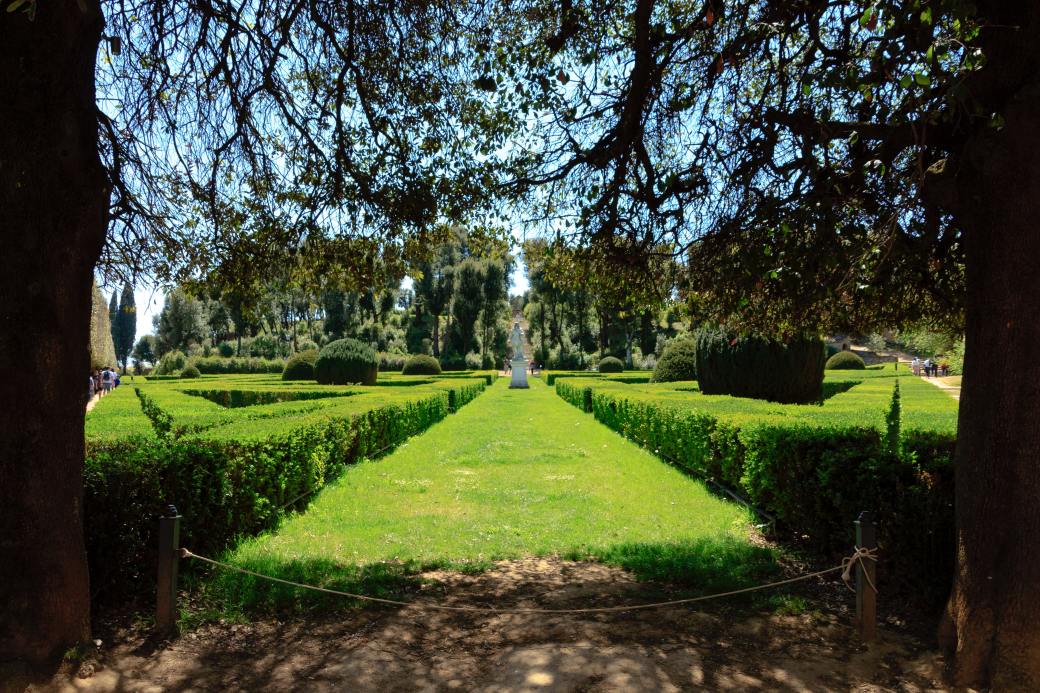 Horti Leonini ph Peter Boccia
Horti Leonini ph Peter BocciaBagno Vignoni
A picturesque village in the Sienese countryside not far from San Quirico d'Orcia, with an enormous thermal pool in the centre of the main square, Piazza delle Sorgenti. Its thermal spring was even used by the ancient Romans, and over the centuries it has been fed into the main square. Not far from the town is the Parco Naturale dei Mulini, a protected natural area.
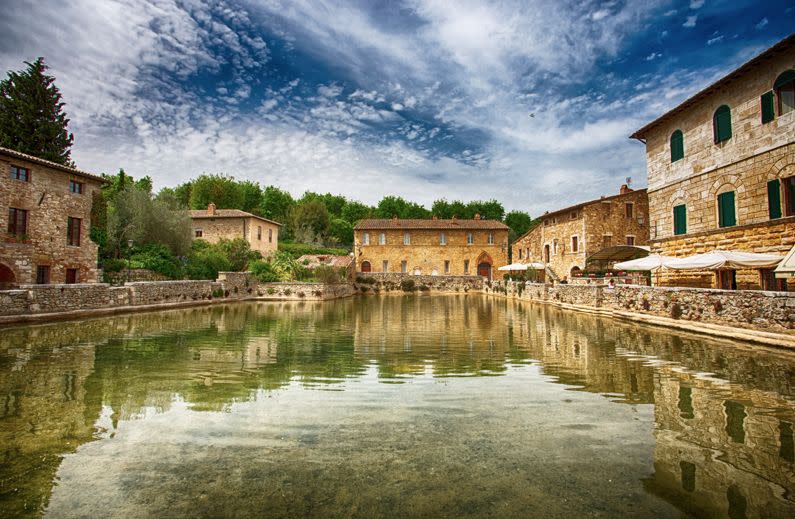 bagno vignoni
bagno vignoniMonticchiello
Less than 15 minutes' drive from Pienza is the village of Monticchiello, a small jewel that still retains the austere features typical of medieval fortresses. The walls and the tower of the keep enclose it like a jewel box and the Church of Saints Leonard and Christopher still bears magnificent witness to Monticchiello's heyday as a medieval fortress.
Montepulciano
Perched on a hilltop not far from Siena, Montepulciano is a medieval town of rare beauty. Piazza Grande is the heart of the town and the stage for the town's main events, including Il Bravio delle Botti, held every year in August. A walk through the streets of Montepulciano is the best way to discover the town and at the same time to admire the incredible view of the surrounding countryside covered in vineyards that produce the famous Nobile wine.
Montalcino
A medieval, almost fairytale-like village, surrounded by mighty walls and dominated by an ancient castle of authentic architectural perfection and renowned throughout the world for the production of the precious Brunello di Montalcino. The village has remained virtually intact, its centre dominated by the Rocca, a fortress built in 1361 to mark the passage of the town under the rule of Siena.
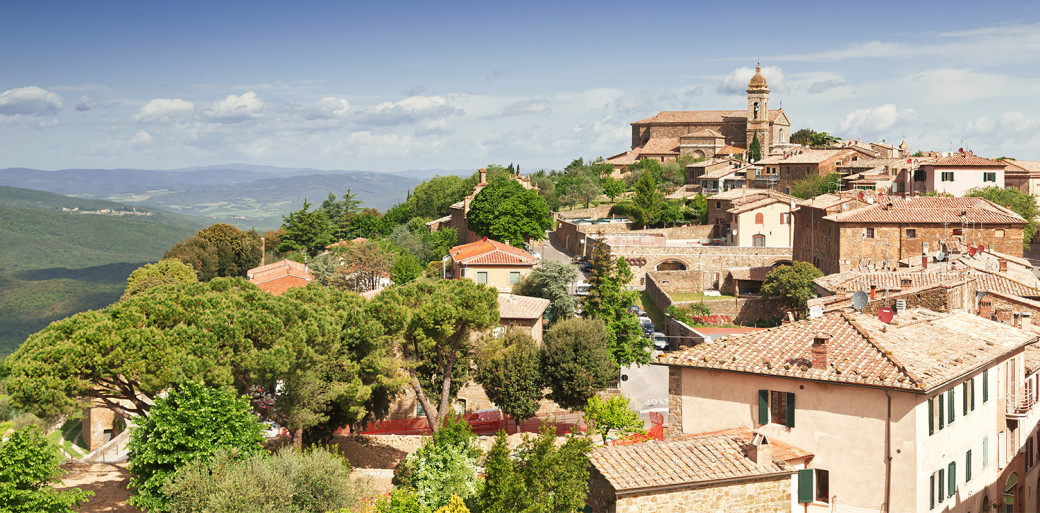 Montalcino and his view on the Val d'Orcia
Montalcino and his view on the Val d'OrciaAbout an hour away you can also see the beauty of Siena, while Chianti is about an hour and a half away.
WHERE TO EAT IN PIENZA:
Osteria Sette di Vino
Piazza di Spagna, 1
ph. +39 0578 749092
A cosy trattoria with a homely, family atmosphere that serves the best traditional Tuscan dishes. Simple and genuine dishes, served on checked tablecloths and accompanied by good local wine. Reservations absolutely necessary!
Ristorante la Terrazza della Val d'Orcia
Via S. Caterina, 1
ph. +39 328 8965140
An enchanting panorama and the scents of rosemary and wild myrtle provide the backdrop for the chef's mouth-watering dishes. The cuisine is express and the menu is linked to seasonality. They favour the use of local raw materials, purchasing produce from local farmers and small workshops.
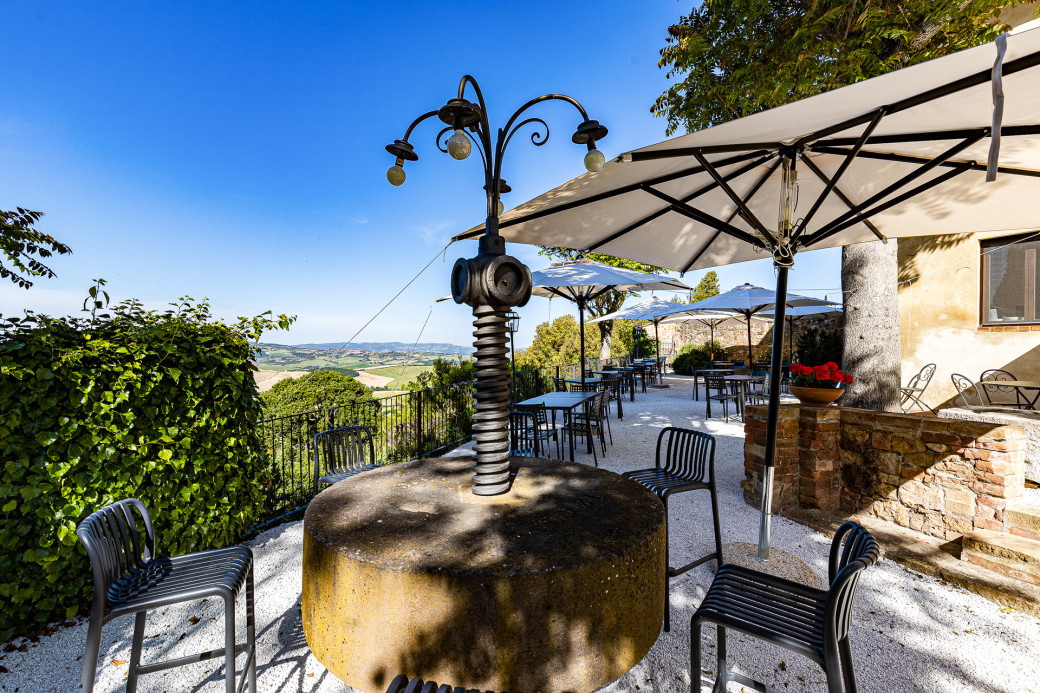 Ristorante la Terrazza della Val d'Orcia
Ristorante la Terrazza della Val d'OrciaTrattoria La Buca delle Fate
Corso il Rossellino, 38/A
ph. +39 0578 748448
Located in what were once the cellars of the Palazzo Gonzaga, Trattoria La Buca delle Fate welcomes customers in an intimate, rustically furnished environment, with a room supported by splendid barrel vaults that have been completely renovated. Dishes are typical of Tuscan cuisine; don't miss the pici all'aglione and the tagliata al rosmarino.
Idyllium
Via Gozzante, 67
ph. +39 380 1018031
Idyllium, with its Terrace and the 15th-century Scuderie di Palazzo Piccolomini, is the perfect place for lunch, dinner, aperitifs and even after dinner. The Cocktail Bar is always open to enjoy a good drink at sunset accompanied by traditional delicacies.
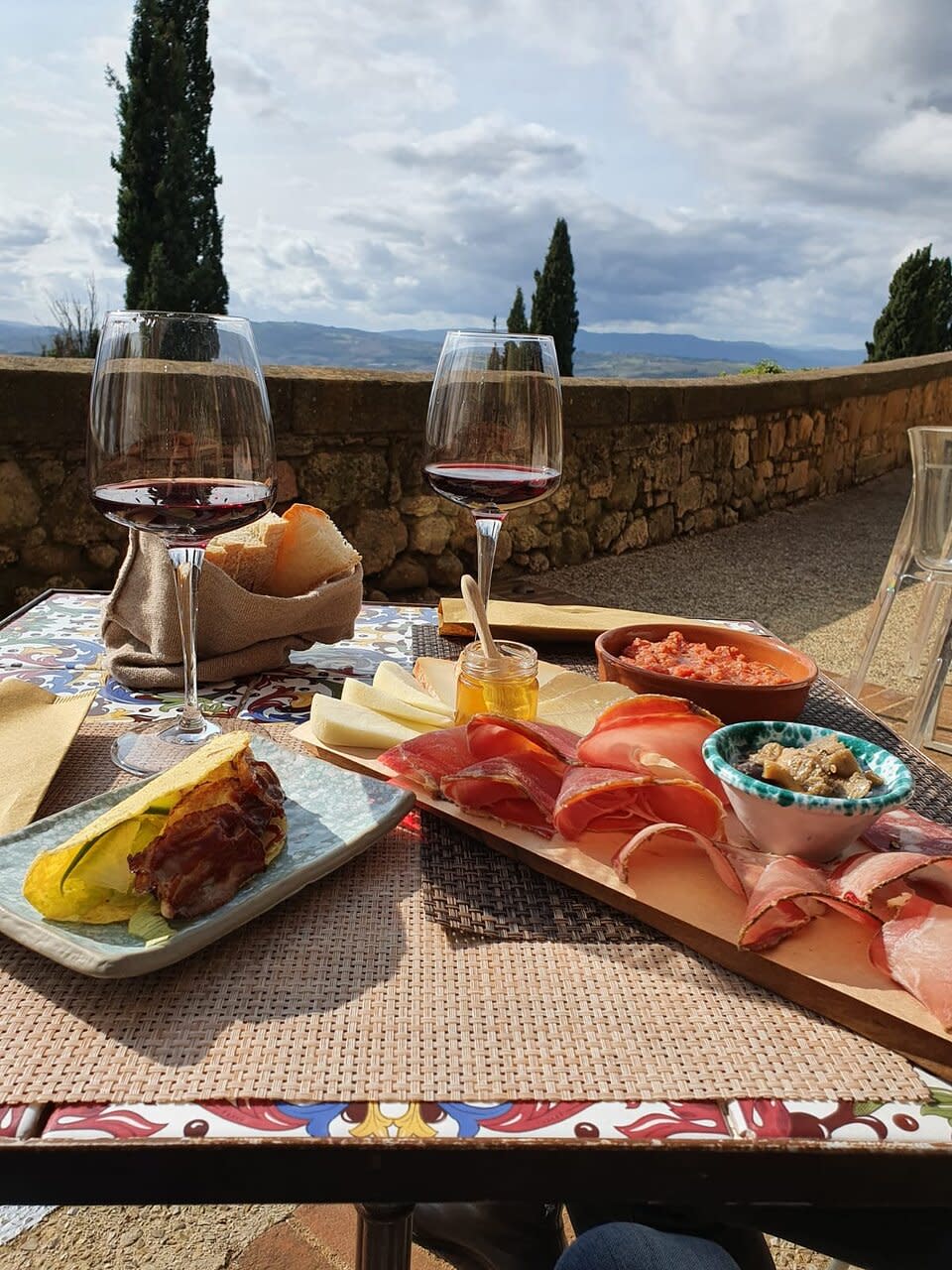 Idyllium Pienza
Idyllium PienzaHOW TO GET TO PIENZA FROM FLORENCE:
Take the A1 motorway and exit at Valdichiana, then follow the signs for Pienza (about 20 km from the tollgate).
HOW TO GET TO PIENZA FROM SIENA:
Take the SS n° 2 Cassia to San Quirico d'Orcia, then follow the signs for Pienza.






